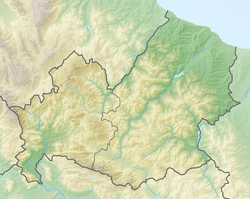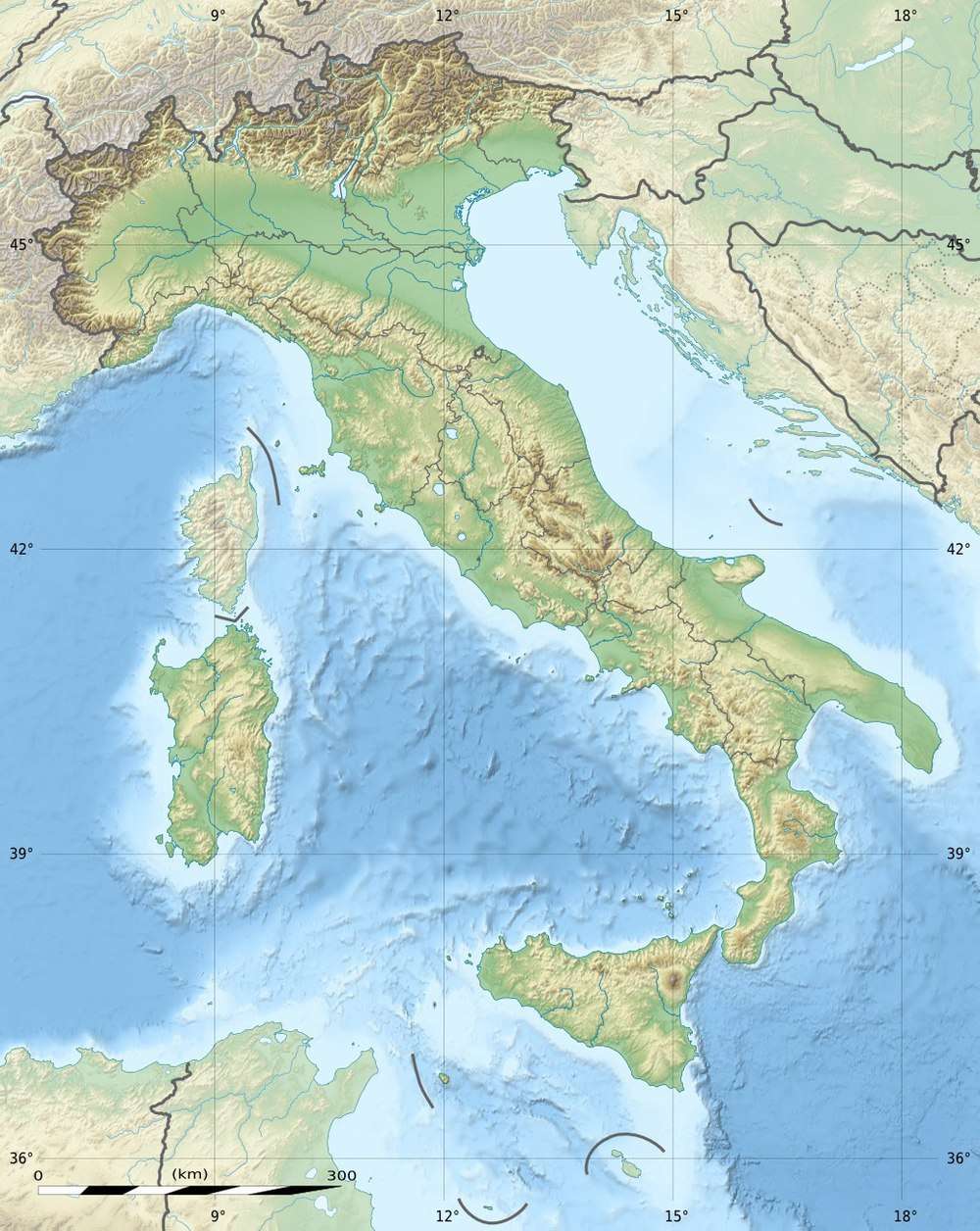2002 Molise earthquakes
The 2002 Molise earthquakes hit the Italian regions of Molise and Apulia on 31 October at 10:32:58 (UTC) and 1 November at 15:09:00 (UTC). The shocks had magnitudes of 5.9 and 5.8 Mw respectively.[2][3] Most of the victims were killed and injured when a school collapsed in the town of San Giuliano di Puglia: 26 of the 51 schoolchildren died, together with one of their teachers. In particular, none of the nine children in the school's 4th Year (mostly born in 1996) survived.
 31/10 01/11  01/11 | |
| UTC time | |
|---|---|
| A: 2002-10-31 10:32:58 | |
| B: 2002-11-01 15:09:00 | |
| ISC event | |
| A: 3512908 | |
| B: 6121342 | |
| USGS-ANSS | |
| A: ComCat | |
| B: ComCat | |
| Local date | |
| A: 31 October 2002 | |
| B: 1 November 2002 | |
| Local time | |
| A: 11:32:58 CET | |
| B: 16:09:00 | |
| Magnitude | |
| A: 5.9 Mw | |
| B: 5.8 Mw | |
| Depth | |
| A: 22 km | |
| B: 21 km | |
| Epicenter | 41.69°N 14.91°E 41.68°N 14.84°E[1] |
| Areas affected | Italy: Molise & Apulia |
| Foreshocks | yes |
| Casualties | 29 killed |
Tectonic setting
Molise and Apulia lie above a series of thrust sheets that were emplaced northeastwards on top of the foreland of the Adriatic Plate due to continental collision during the Neogene. In the southern part of the Apennines, the thrusting is no longer active, but it continues in northern Italy along the southern margin of the Po Plain. The foreland to the east is characterised by zones of active west–east trending dextral (right-lateral) strike-slip faulting. The best described of these zones is the Mattinata Fault, which has a clear topographic expression on the south side of the Gargano Peninsula and has been traced offshore into the Adriatic Sea. The estimated epicentre of the 1627 Gargano earthquake lies just beyond the western end of the known extent of the Mattinata Fault, although the link between the two remains uncertain.[1]
The Molise and Apulia regions are areas of low historical seismicity and relatively few earthquake records are available from the instrumental era.
Damage
First shock
During the night of 30–31 October there had already been three minor foreshocks, with the strongest at 03:27 (a magnitude of 3.5 on the Richter Scale, IV–V on the Mercalli intensity scale). The strongest tremor took place at 11:32 on 31 October 2002 in the area of lower Molise, which is situated in the north-east of the Province of Campobasso. It reached from the Frentani Mountains to the Fortore valley. It lasted for 60 seconds and could be felt distinctly in the centre of Molise, in the Capitanata, the Province of Chieti, and could be felt in Marche, Bari, Benevento, Matera, Brindisi, Rome, Naples, Potenza, Salerno, Taranto and Pescara.
San Giuliano di Puglia was near the epicentre (located between Campobasso, Larino and the Apennine Dauno). Due to the quake part of the roof of the school building "Francesco Jovine" collapsed. The school included a kindergarten, a primary school and a middle school. The roof landed on the lower part of the school. There were 57 children, 8 teachers and 2 caretakers trapped under the rubble.
References
- Di Luccio, F.; Fukuyama, E.; Pino, N.A. (2005). "The 2002 Molise earthquake sequence: What can we learn about the tectonics of southern Italy?". Tectonophysics. 405 (1–4): 141–154. doi:10.1016/j.tecto.2005.05.024.
- ANSS. "Molise 2002a : M 5.9 - southern Italy". Comprehensive Catalog. U.S. Geological Survey. Retrieved 25 April 2020
- ANSS. "Molise 2002b : M 5.8 - southern Italy". Comprehensive Catalog. U.S. Geological Survey. Retrieved 25 April 2020
Further reading
- Azzara, R. M.; Braun, T.; Cara, F.; Cultrera, G.; Di Giulio, G.; Marra, F.; Rovelli, A. (2003), "The ML 5.4 Molise earthquake (Central Italy) of October 31, 2002: Why so destructive effects in San Giuliano di Puglia", Egs - AGU - Eug Joint Assembly: 9611, Bibcode:2003EAEJA.....9611A
External links
- USGS - M 5.9 - Southern Italy
- In pictures: Italy school tragedy (BBC)
- The International Seismological Centre has a bibliography and/or authoritative data for this event.